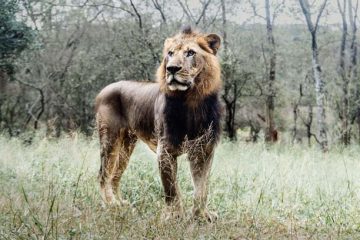Hunger, death on offer as forests vanish fast
 The number of phone calls we receive every day is amazing. People call to say fishing cats have been killed or captured. Jungle cat kittens found. Vultures lying sick. And of course, tigers have been killed.
The number of phone calls we receive every day is amazing. People call to say fishing cats have been killed or captured. Jungle cat kittens found. Vultures lying sick. And of course, tigers have been killed.
If we put together all these pieces of information, we get a terrifying bigger picture of what has been happening to our wildlife.
One thing is quite clear now. Our forests, or for that matter whatever is left, can no longer give food and shelter to wildlife. The animals are coming out of the little green cover that is left in search of food and are killed by humans.
With the vanishing forests, the last of the animals and birds are going extinct too. I have often found people killing jungle cats and civets because they raid chicken coops for food. A villager cannot sustain the loss of his poultry to a hungry cat. He has little time to think that the same fishing cat he is killing for eating his chickens is actually doing him more help by preying on rodents that damage his crops.
The few forest patches that are left around are in a pathetic condition. I have found people commercially harvesting wild jackfruits meant for langurs and all other mammals and birds to be shipped to the cities. Illegal logging is rampant. Lawachhera and Satchhari forests have been degraded so heavily over the last two years that they can be easily said to be in their deathbeds.
These patch forests are all isolated islands. And that poses another serious threat to our wildlife. The animals and birds are all confined in a small place. And that is how they are denied of the genetic variety. Inbreeding is causing the ultimate damage to the species. When the same genes circulate among a small group, physical deformities are bound to develop. That is why we now see sick and deformed monkeys in the forests. That is why the crocodiles are found infertile. There are only eight long-tailed macaques left in Teknaf. They have absolutely no hope any more. Even if nobody kills them, they are bound to vanish because of lack of genetic variation. The fate of Haspid Hare, sloth bear or clouded leopard is now thought to be sealed with no recent sightings. They are just some names waiting to creep into the IUCN’s list of extinct animals.
The birds are facing a hard time too. While some species like whistling ducks, gadwalls and common shell ducks are proliferating because they are strong survivors, we see too few vultures or hill mynas. You consider yourself lucky if you get to see a black francolin that only survives in Tetulia in the north. And Alexandrian Parakeets are seldom found in some small pockets like Sherpur. Dr Reza Khan and I have searched extensively the hill tracts and come empty handed without sighting any white-winged wood duck. This wonderful bird is now deemed extinct. So are greater adjutant, swamp francolin or Bengal Florican.
We have destroyed bird habitat extensively to see this sorry state of birds. Water bodies have been filled or poisoned. We have cut down all the tall trees so that big birds cannot find any nesting place. We have finished off soft-fleshed trees like civet fruit trees to deny nesting place for many birds like white-winged wood duck. And we have introduced foreign species of trees instead of indigenous kinds. These introduced species like acacia have little impact on wildlife preservation.
And look at tigers, our last pride. Once they roamed through Bangladesh. Now they are all locked in a small place called the Sundarbans. They are not used to saline water condition. Yet they have to somehow survive there. Or die slowly. Their food has diminished as we have poached deer. Now they come to our villages in search of food and then get killed regularly. You cannot blame the villagers much. They are getting killed by tigers too. The human-tiger conflict is now all time high.
And what else could we expect when we destroy our forests. We have not even cared to create a special, task-oriented department solely for wildlife. The forest department is too insufficient to care for birds and animals.
We are a lucky generation. We have at least seen some of the last wildlife. Our next generation will not.
The Awami League had promised in its election manifesto that if elected it will work towards conserving biodiversity. It has been two and a half years since the party has been in power. We still wait for implementation of its promise when we will no longer see that habitat is destroyed and wildlife killed.
Courtesy of The Daily Star



